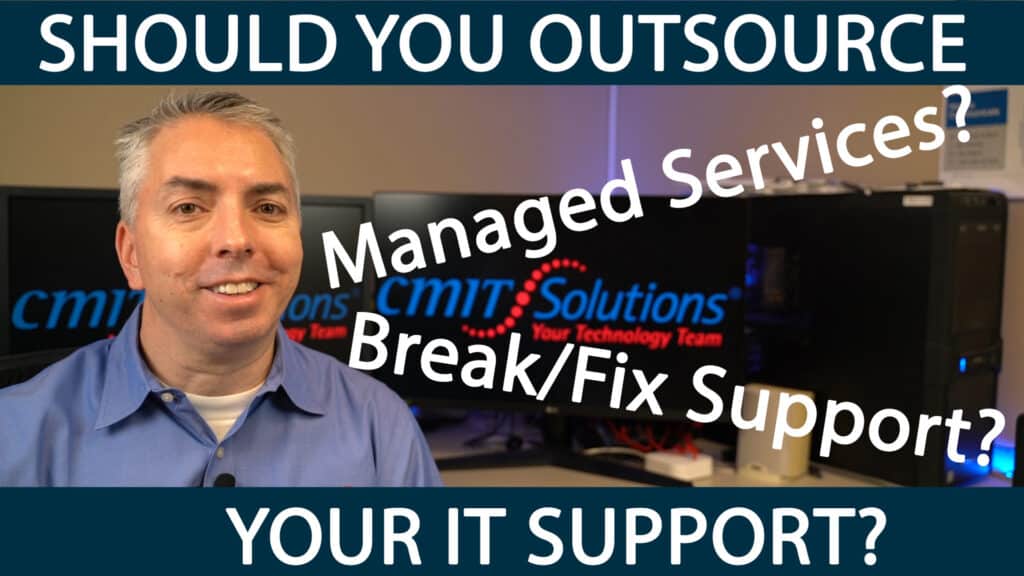As technology continues to evolve, choosing the right server infrastructure becomes a crucial decision for any business. The debate between cloud servers and physical servers centers on factors like scalability, security, performance, and cost-efficiency. At CMIT Solutions of Oak Park, Hinsdale & Oak Brook, we help businesses navigate this critical choice by providing expert guidance and tailored IT solutions.
This comprehensive guide explores the key differences between cloud and physical servers and how each solution aligns with your business objectives.
Understanding Cloud Servers and Physical Servers
What Are Cloud Servers?
Cloud servers are virtualized environments hosted by third-party providers, delivering computing resources over the internet. They offer on-demand scalability, remote access, and automated updates, making them ideal for dynamic and growing businesses.
Explore how our cloud services can support business growth through scalable and secure solutions.
What Are Physical Servers?
Physical servers are on-premises hardware that stores and manages data within a company’s infrastructure. They provide businesses with full control over security, customization, and system configurations.
Discover how effective network management of physical servers can maintain stability and security.
Key Differences Between Cloud and Physical Servers
1. Access and Flexibility
Cloud servers provide seamless remote access, allowing teams to work from anywhere. This feature is essential for businesses embracing hybrid and remote work environments.
In contrast, physical servers require on-site access, which can limit flexibility. Businesses operating from multiple locations or remotely might face challenges with physical infrastructure.
Improve collaboration with our unified communication strategies tailored for modern workplaces.
2. Backup and Disaster Recovery
Cloud servers offer automated backups and built-in disaster recovery solutions. This ensures data safety and quick recovery in case of system failures.
Physical servers require businesses to implement manual backup strategies, often increasing the risk of data loss if not managed properly.
Learn how our data backup and recovery services safeguard business continuity.
3. Cost Efficiency
Cloud servers operate on a subscription-based model, reducing upfront hardware expenses. This pay-as-you-go approach can be more cost-effective for growing businesses.
Physical servers demand a high initial investment in hardware and infrastructure. Over time, maintenance and upgrades can lead to higher operational costs.
Simplify your IT investments with our flexible procurement solutions designed for small to medium-sized businesses.
4. Control and Customization
Physical servers offer full control over hardware, software, and security settings. This makes them suitable for industries with strict compliance and security requirements.
Cloud servers provide limited customization since they are managed by external providers. However, they relieve businesses of routine maintenance and updates.
Ensure compliance and minimize risks with our compliance solutions.
5. Scalability
Cloud servers allow businesses to scale resources up or down quickly based on demand. This adaptability makes them perfect for startups and businesses with fluctuating workloads.
Physical servers are limited by hardware capacity. Scaling up requires significant investment in additional infrastructure.
Learn how we help businesses grow with managed IT services tailored to their needs.
6. Security and Threat Protection
Cloud servers rely on the provider’s security protocols, including encryption, firewalls, and threat detection. However, businesses must trust third parties to manage sensitive data.
Physical servers offer on-site control over security measures, which can be customized to meet specific compliance and data protection standards.
Strengthen your defense with our cybersecurity solutions for advanced protection.
Cloud Servers: Advantages and Disadvantages
Pros
- Scalability: Instantly scalable to match business growth.
- Remote Access: Supports remote and hybrid teams.
- Cost Savings: Reduced upfront costs with predictable monthly fees.
- Disaster Recovery: Built-in backup and recovery.
Cons
- Limited Control: Provider manages security and infrastructure.
- Internet Dependency: Performance relies on internet speed.
Physical Servers: Advantages and Disadvantages
Pros
- Full Control: Customizable security and software configurations.
- Stable Performance: Dedicated hardware ensures consistent performance.
Cons
- High Costs: Significant initial hardware investment.
- Maintenance: Requires in-house IT support for upkeep.
Making the Right Choice for Your Business
The decision between cloud and physical servers depends on your business’s size, industry, and specific operational needs. Businesses needing flexibility and scalability may benefit more from cloud solutions, while industries with sensitive data requirements might prefer the control of physical servers.
Explore how we help businesses choose the right solution in our IT strategy guide.
How CMIT Solutions of Oak Park Can Help
At CMIT Solutions of Oak Park, Hinsdale & Oak Brook, we specialize in helping businesses make informed IT decisions. Our services include:
- Managed IT Services for scalable solutions.
- Cloud Solutions for secure and flexible infrastructure.
- Cybersecurity Protection to safeguard your business.
- Disaster Recovery planning for business continuity.
Ready to Find the Perfect IT Solution?
Choosing between cloud and physical servers is a strategic decision that impacts your security, scalability, and cost-efficiency. Let us guide you toward the best solution for your business needs.
Contact CMIT Solutions of Oak Park, Hinsdale & Oak Brook today to discuss how we can help you streamline your IT infrastructure and drive business growth.
Call us today at 708-919-5132.
Or fill out our contact form to get started.
At CMIT Solutions of Oak Park, Hinsdale & Oak Brook, we deliver the technology solutions your business needs to thrive in today’s digital world.




